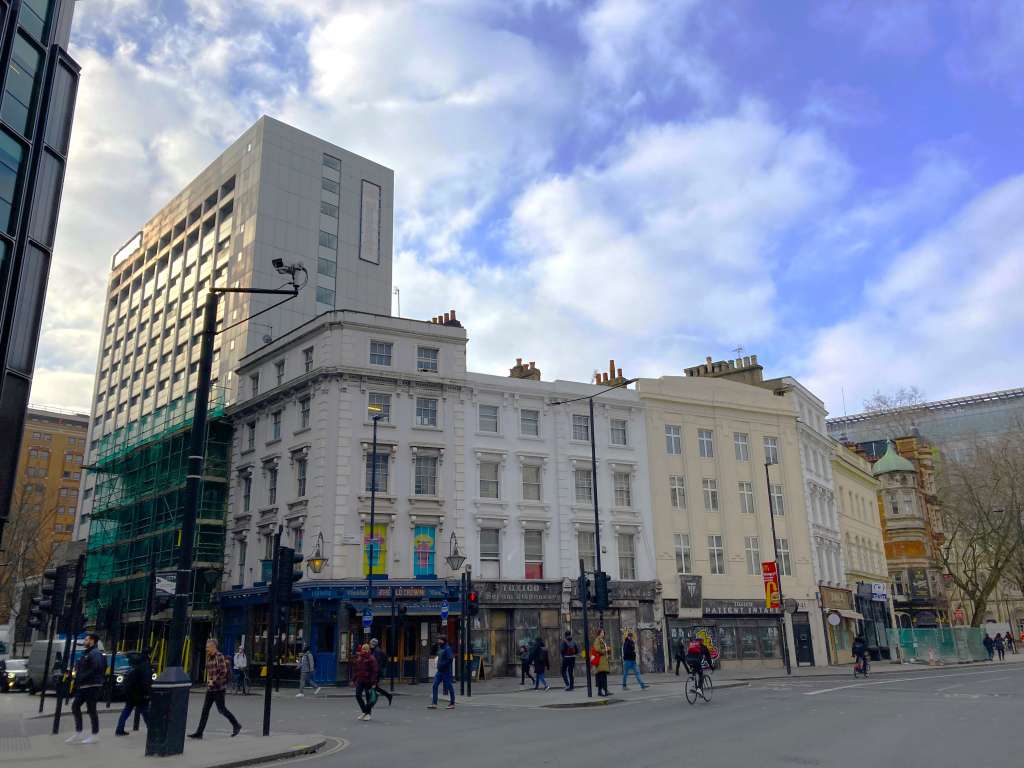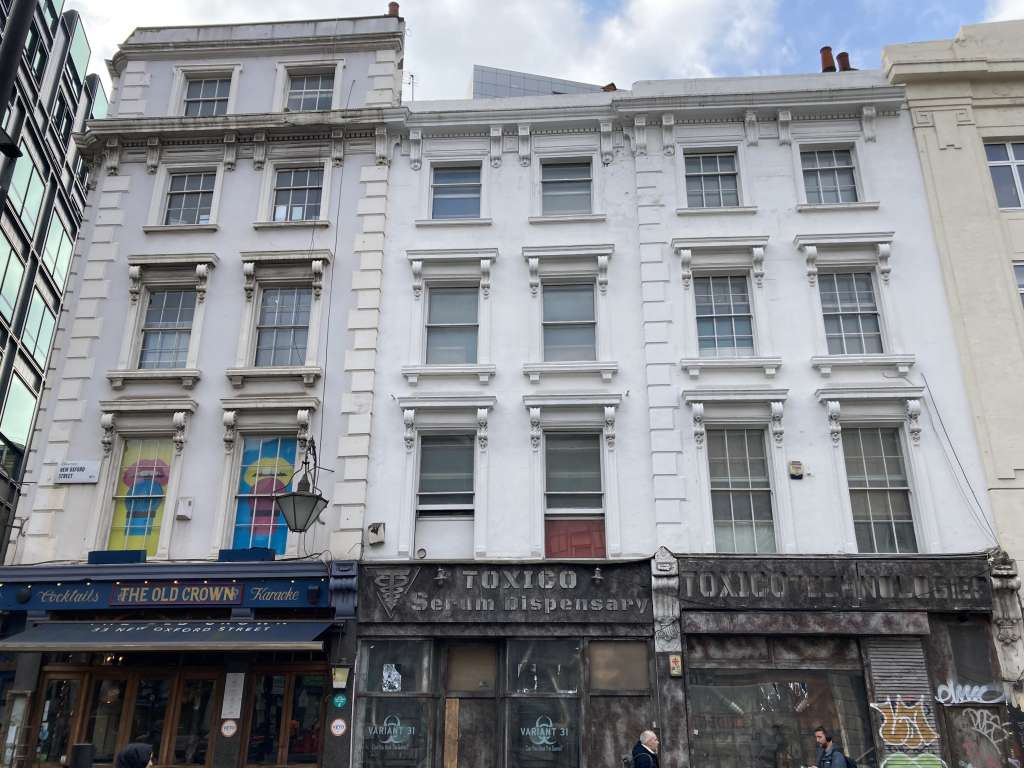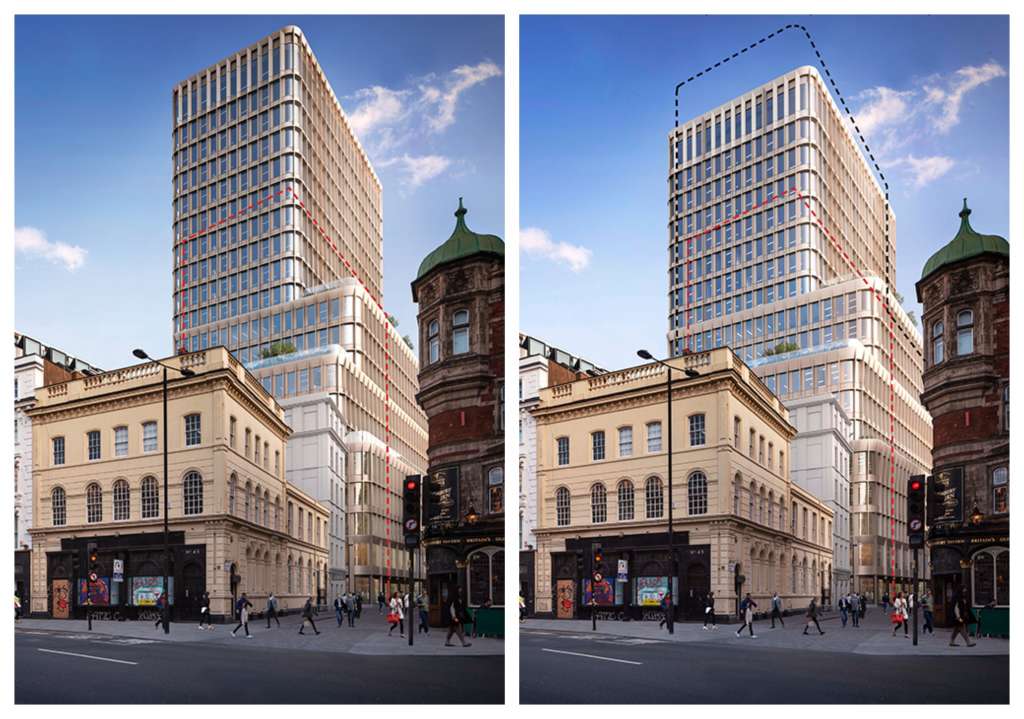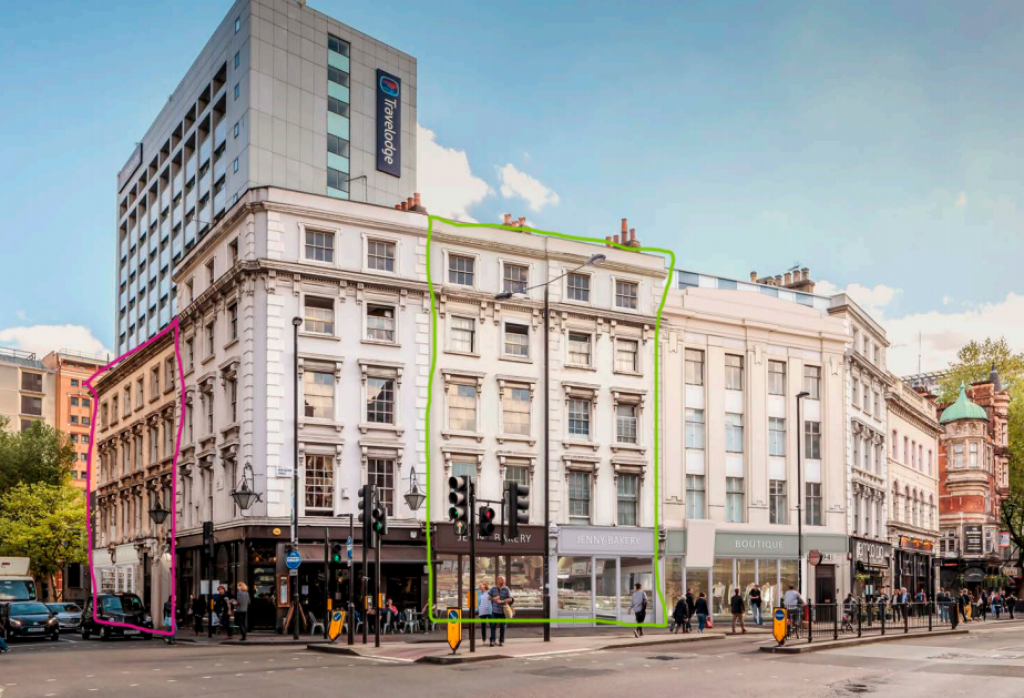Georgian gems granted listing protection in the battle for Museum Street
21st March 2023
A series of fine but neglected early 19th century buildings just metres from the British Museum have been granted listing protection in the face of controversial development plans.
SAVE Britain’s Heritage welcomes the news and hopes it will force the developer back to the drawing board to come up with a more contextually sympathetic scheme.
The newly listed buildings include 10-12 Museum Street and 35-37 New Oxford Street. They were all listed in February 2023 on account of their architectural and historic significance, and their survival as some of the last remaining remnants of old Bloomsbury and Holborn.
Nos. 10-12 Museum Street comprises a Georgian terrace of shops and former offices or chambers, now converted into studio flats. The three conjoined buildings were built around the 1820s and re-fronted in about 1863-1865, probably by the Duke of Bedford’s surveyor, Charles Parker, to match the immediately adjacent buildings of the New Oxford Street. The rendered elevations are characterised by decorative moulded window surrounds and prominent projecting cornices.
Nos. 35 and 37 New Oxford Street comprise a terrace of shops built in stock brick faced in stucco with offices on the upper floors. The terrace was built between 1845 and 1847 as part of New Oxford Street which was laid out to plans by (Sir) James Pennethorne, Joint Architect and Surveyor for the Metropolitan Improvements to the Commissioners of Woods and Forests with Thomas Chawner.
Set between the two terrace is the unlisted Old Crown Public House which completes the ensemble, turning the corner between New Oxford Street and Museum Street.
The buildings sit within an undeveloped fragment of central London bound by West Central Street, Museum Street and New Oxford Street - the northern section of which sits within the Bloomsbury Conservation Area. The site is currently subject to a major planning application for a contraversial tower which will overshadow London’s famous Shaftesbury Avenue and be clearly visible within views to and from the British Museum and Bedford Square.
Under the plans by developer LabTech, the existing 1960s Travelodge building known as Selkirk House would be demolished to make way for a new 21-storey residential tower block almost a third higher than the existing building. A number of historic but unlisted buildings on West Central Street and much of the interior behind the frontages of 10-12 Museum Street and 35-37 New Oxford Street would also be demolished for the new tower and podium slab.
The plans are being fought by Save Museum Street, a coalition of local residents' associations and interest groups, supported by a number of national heritage bodies including SAVE, The Victorian Society and The Georgian Group.
Beyond the obvious and extreme carbon cost of demolition required under the plans, the new tower would cause far-reaching visual harm to the surrounding area, including the setting of two conservation areas and the settings of numerous listed buildings.
The applicants claim they cannot retain and convert the existing Selkirk House building because of “irregular column spacing”, an argument also relied on by Marks & Spencer at the recent public inquiry into its plans to bulldoze its historic Marble Arch store on Oxford Street.
SAVE has objected to both iterations of the Museum Street scheme, including the latest paltry revisions in spring 2022 which saw the height of the proposed tower reduced by 6m and instead made wider.
National heritage body Historic England has also objected to the plans, warning that the tower element of the scheme would have a “major, harmful impact upon the Bloomsbury Conservation Area” and that they “are not persuaded that the justification for the harm has been demonstrated, or that significant public benefits could not be achieved with a scheme that causes much less harm to heritage significance.”
It is hoped that the new listings will now require the applicant to rethink or withdraw the damaging proposals in favour of a scheme which addresses its historic setting in a sympathetic and sustainable manner.
If you haven’t already, you can add your name to the list of almost 300 people objecting to the scheme by emailing your comments to planning@camden.gov.uk or using LB Camden’s online form.
ENDS
Note to editors
1. For more information contact Ben Dewfield-Oakley, conservation officer at SAVE Britain’s Heritage – ben.dewfieldoakley@savebritainsheritage.org / 020 7253 3500
2. SAVE Britain’s Heritage is an independent voice in conservation that fights for threatened historic buildings and sustainable reuses. We stand apart from other organisations by bringing together architects, engineers, planners and investors to offer viable alternative proposals. Where necessary, and with expert advice, we take legal action to prevent major and needless losses





